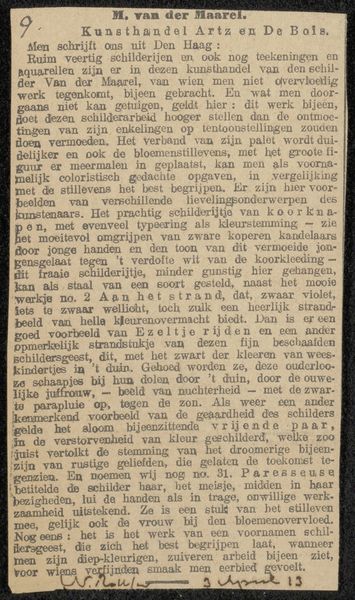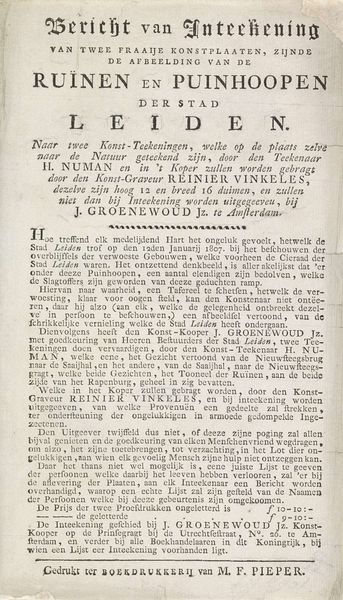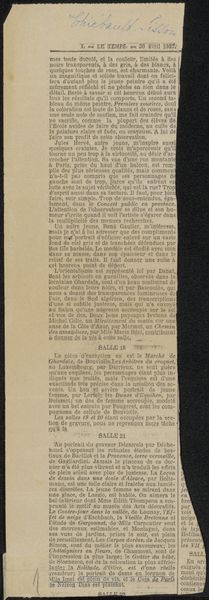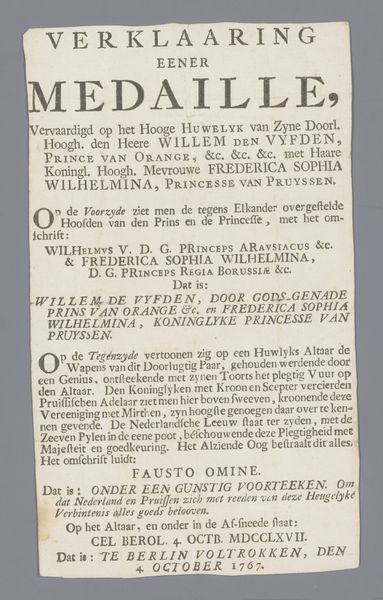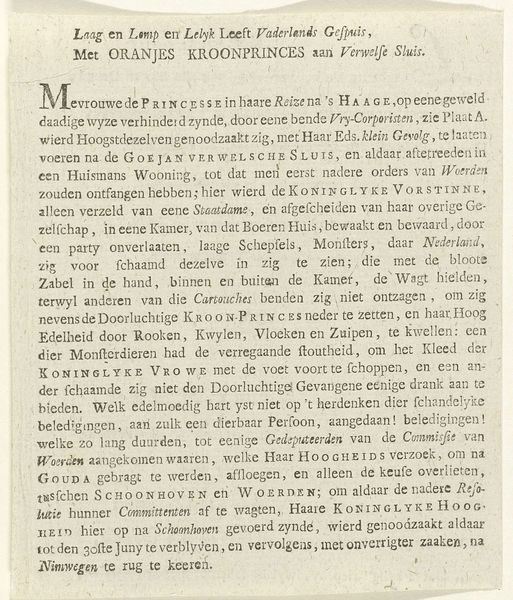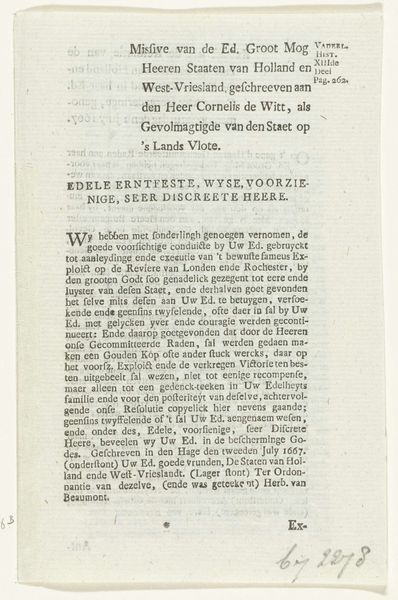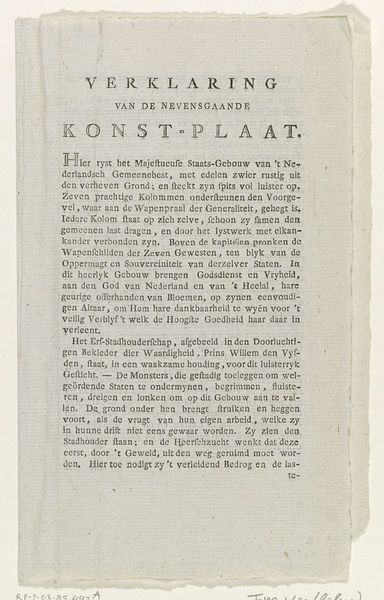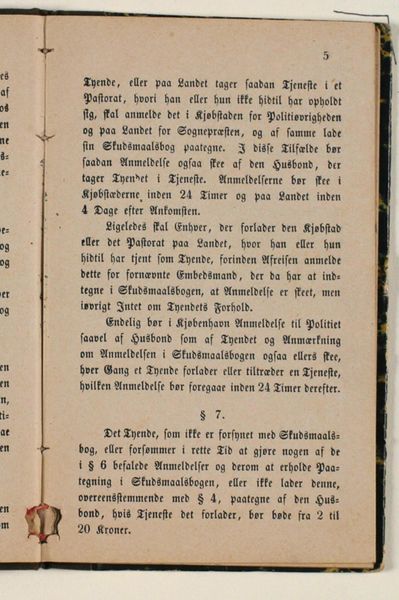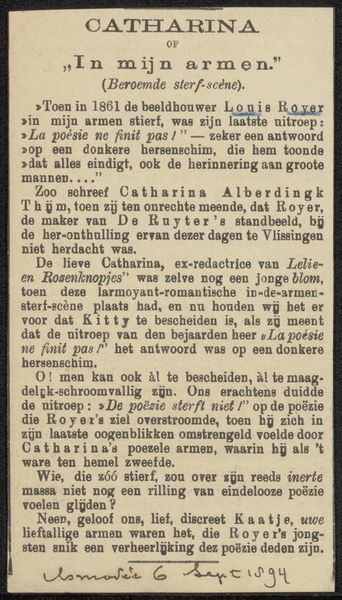
print, paper, collotype
#
dutch-golden-age
# print
#
paper
#
text
#
collotype
Copyright: Rijks Museum: Open Domain
Editor: Here we have a newspaper clipping from the Jan Veth archive, dating roughly from 1874 to 1925. It’s a collotype print on paper, currently held at the Rijksmuseum. It's essentially just text, yet something about its density is compelling. How do you interpret this piece, focusing perhaps on its structural or formal aspects? Curator: Focusing on the intrinsic elements, we must examine the composition first. The dense arrangement of text creates a unified block, a deliberate construction despite being “merely” a clipping. Notice the subtle variations in tone and texture across the surface. Editor: It’s interesting you point that out. I hadn't considered the variations in the print itself as contributing to its aesthetic. Curator: Indeed. Semiotically, we could dissect the typeface, letterforms and their cultural implications within the historical period, though it requires understanding linguistic roots. The texture becomes less about transmitting information, and more about tactile presence. Editor: So you're saying the material quality of the print elevates it beyond just the message being conveyed? Curator: Precisely. The work is primarily about surface qualities, ink density, and the physical act of printing itself. The arrangement, justified margins, contribute to a structured form. This focus shifts attention from semantic understanding to tangible features. How the elements interact is more meaningful. Editor: It seems I was initially caught up in trying to “read” it. Shifting to a focus on form opens it up in an interesting way. Curator: Agreed. Now one starts considering negative spaces. With formal analysis, it’s critical to examine every component to reveal artistic intent through a purely objective lens, divorced from conventional narratives. Editor: I will attempt looking closer at forms going forward instead of searching narratives behind the art work.
Comments
No comments
Be the first to comment and join the conversation on the ultimate creative platform.

